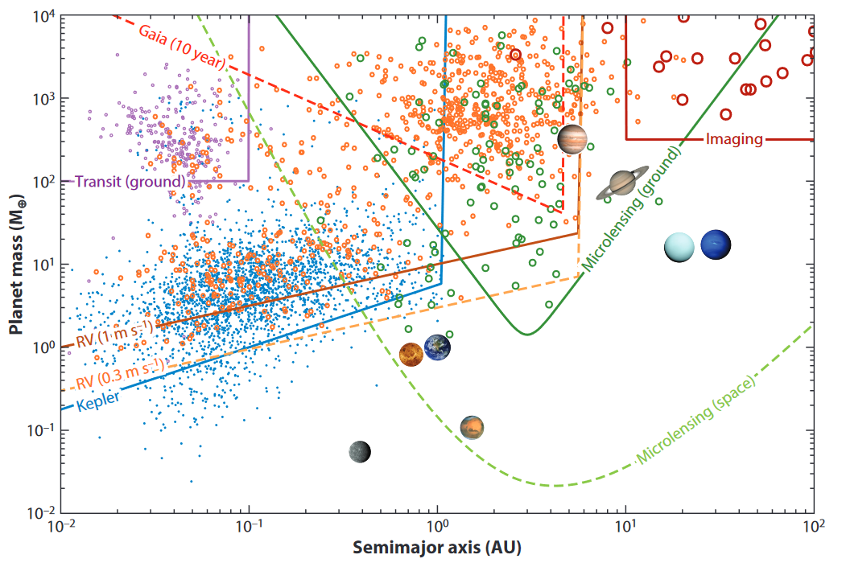DoA faculty reviews the statistical distribution of exoplanets
How do planetary systems form and evolve? It is a scientific question that astronomers have long been wondering and also a key step toward understanding the origin of life and human beings on Earth. Since the discovery of the first planet orbiting around a Sun-like star outside of the Solar System in 1995 (which was awarded the Nobel Physics Prize in 2019), the number of known exoplanets has grown to over 4000. This large sample has enabled many detailed studies into the statistical distribution of planets and has sharpened our understanding of the planet formation process.
Recently, Assistant Professor in the Department of Astronomy (DoA) at Tsinghua University, Wei Zhu, published a review article that summarizes the recent progress in the field of exoplanets, one of the most active fields in modern astronomy. This review article critically reviewed the progress in the past five to ten years on exoplanet statistics. The review focuses on the distribution of planets with relatively short orbital separations (less than ~1 Earth-Sun separation), in which the most successful planet hunting mission---the Kepler Space Telescope of NASA---has played a critical role (see Figure 1). The review also discussed the results from radial velocity and gravitational microlensing methods on the distribution of planets at relatively wide separations. It summarized and commented on the implications of the derived statistics on the formation and evolution of planetary systems.
The review was published by Annual Review of Astronomy and Astrophysics (ARA&A) with the title Exoplanet Statistics and Theoretical Implications on September 8th, 2021. Prof. Zhu is the first author and Prof. Subo Dong from the Kavli Institute for Astronomy and Astrophysics (KIAA) at Peking University is the coauthor and corresponding author.
Link to the ARA&A review:https://www.annualreviews.org/doi/abs/10.1146/annurev-astro-112420-020055




